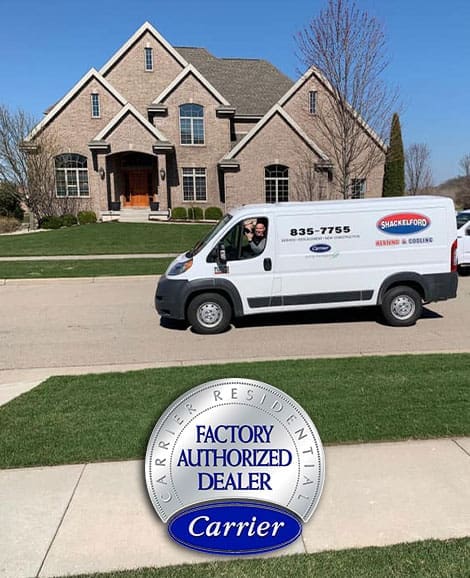Hybrid heating systems, also known as dual-fuel systems, combine the best attributes of electric heat pumps and gas furnaces to optimize energy efficiency, cost savings, and environmental sustainability. As energy consumption patterns evolve and climate change concerns intensify, the integration of hybrid heating systems in residential and commercial spaces has gained significant traction.
Components of Hybrid Heating Systems
A typical hybrid heating system comprises two primary components: an electric heat pump and a gas furnace. Each component has distinct operational characteristics:
Electric Heat Pump
Heat pumps transfer heat rather than generating it by burning fuel. In cooling mode, they extract heat from indoor air and expel it outside, whereas in heating mode, they absorb heat from the outdoor air (even at low temperatures) and release it indoors. Heat pumps are highly efficient, with a coefficient of performance (COP) that can exceed 3.0, meaning they produce more than three units of heat for every unit of electricity consumed.
Gas Furnace
Gas furnaces burn natural gas or propane to produce heat. The combustion process generates hot air, which is then distributed throughout the building via ductwork. Modern high-efficiency furnaces have annual fuel utilization efficiency (AFUE) ratings of 90% or higher, indicating that a significant portion of the fuel’s energy content is converted into usable heat.
Operational Dynamics
The operational efficiency of hybrid heating systems hinges on the strategic use of both components based on outdoor temperature conditions. The system automatically switches between the heat pump and the gas furnace to maximize efficiency and comfort:
Mild to Moderate Cold Weather
During milder temperatures, the heat pump is the primary heat source. Given its high efficiency in transferring ambient heat, the heat pump provides adequate heating at a lower operational cost compared to the gas furnace.
Severe Cold Weather
As outdoor temperatures drop significantly, the efficiency of the heat pump diminishes. At this point, the gas furnace activates to ensure consistent and effective heating. Gas furnaces can generate high heat output quickly, making them ideal for very cold conditions.
Temperature-Based Switching
Hybrid systems are equipped with a control unit that monitors outdoor temperatures and determines the most cost-effective heating source. This unit can be programmed with a “balance point,” a temperature threshold at which the system switches from the heat pump to the gas furnace.
Benefits of Hybrid Heating Systems
Hybrid heating systems offer numerous advantages, which Shackelford emphasizes in his discussions:
Energy Efficiency
By utilizing the heat pump when it is most efficient and switching to the gas furnace only when necessary, hybrid systems minimize energy consumption. This strategic operation reduces overall heating costs and conserves energy resources.
Cost Savings
Homeowners and businesses can achieve substantial cost savings by leveraging the lower operational costs of heat pumps during milder weather. The occasional use of the gas furnace during extremely cold conditions ensures reliability without significantly impacting annual heating expenses.
Environmental Sustainability
Hybrid systems reduce greenhouse gas emissions by relying on electricity for heating during periods when it is most efficient. This approach lessens dependence on fossil fuels and contributes to a lower carbon footprint.
Comfort and Reliability
The automatic switching mechanism ensures a continuous and comfortable indoor environment regardless of external temperature fluctuations. Users do not have to manually adjust the system, as it seamlessly transitions between heating sources.
Longevity and Maintenance
Hybrid systems distribute the workload between the heat pump and the gas furnace, reducing wear and tear on each component. This balanced operation can extend the lifespan of the overall system and reduce maintenance requirements. Heat pumps, typically used during moderate weather, do not experience the intense usage associated with extremely cold temperatures, which can strain their components. Similarly, the gas furnace is preserved for the most demanding conditions, ensuring it operates efficiently when needed.
Implementation and Considerations
Implementing a hybrid heating system involves careful planning and consideration of various factors:
Climate Suitability
Hybrid systems are particularly beneficial in regions with moderate to cold climates. In areas where temperatures frequently drop below freezing, the gas furnace can provide necessary supplemental heat. Conversely, in milder climates, the heat pump can handle the majority of heating needs, maximizing efficiency.
System Sizing
Proper sizing of both the heat pump and gas furnace is crucial. An undersized system may struggle to maintain comfortable temperatures, while an oversized system can lead to inefficiencies and higher operational costs. Professional assessment and calculation of heating loads are essential to determine the appropriate system size for a specific building.
Installation and Integration
Professional installation ensures that the hybrid system components are properly integrated and optimized for seamless operation. This includes configuring the control unit, setting the balance point, and ensuring that ductwork and electrical connections are appropriately designed to support both heating sources.
Economic Incentives
Various economic incentives, rebates, and tax credits are available to encourage the adoption of energy-efficient heating systems. These incentives can offset the initial installation costs and improve the overall return on investment for homeowners and businesses. Exploring available incentives can make hybrid heating systems a more attractive option.
Monitoring and Maintenance
Regular monitoring and maintenance are vital to ensure the hybrid system operates at peak efficiency. This includes routine inspections, cleaning, and servicing of both the heat pump and gas furnace. Modern hybrid systems often come equipped with advanced diagnostics and monitoring features that alert users to potential issues, facilitating proactive maintenance.
Conclusion
Hybrid heating systems represent a sophisticated and efficient approach to meeting modern heating needs. By combining the strengths of electric heat pumps and gas furnaces, these systems offer a versatile solution that adapts to varying temperature conditions, maximizing energy efficiency and cost savings while minimizing environmental impact. Insights from Shackelford underscore the importance of strategic implementation and maintenance to fully realize the benefits of hybrid heating systems. As the demand for sustainable and cost-effective heating solutions continues to grow, hybrid systems are poised to play a pivotal role in shaping the future of indoor climate control.





